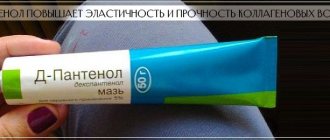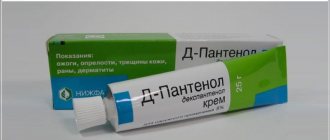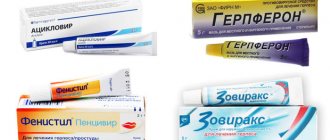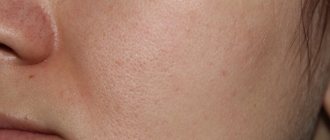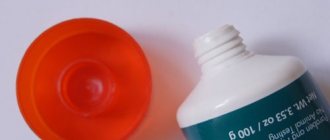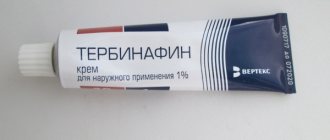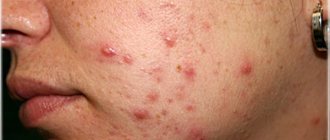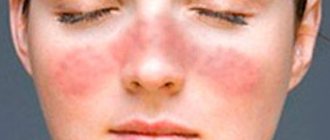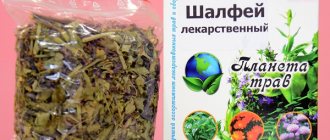Despite the fact that the scope of use, as well as the composition of these two means, is very similar, there are categories of the modern population who still do not know about the existence of those features that distinguish them from each other.
Indeed, these two drugs are used by those clients who wish to restore tissue that was previously damaged in some way. Both of these drugs help with a runny nose, and also have an extremely positive effect on the restoration of the cornea, which often manifests itself when erosion has begun in a certain person.
An additional area of use of Panthenol and DPanthenol is the restoration of metabolism at the cellular level, as well as collagen-type fibers. They are produced in the form of tablets, capsules, and lozenges. Recently, solutions intended not only for external, but also for internal use have become quite popular.
D-panthenol - general description
D-panthenol ointment and cream are available in a dosage of 5% and in volumes of 25 and 50 g. The main active component of the drug is dexpanthenol. The auxiliary components of the two release forms are different. The ointment contains paraffin and wax, and the cream contains a large amount of water. Such compositional features determine the differences between the two forms of release.
The medicine is used to accelerate skin recovery from various injuries. It helps with injuries to the mucous membrane and skin, as well as with minor burns.
The product is effective in the treatment of inflammation, ulcers, and bedsores. It can be used for irritation resulting from radiotherapy, phototherapy, ultraviolet irradiation. Young mothers use D-panthenol to treat and prevent cracked nipples.
Other indications for use:
- prevention of diaper dermatitis;
- skin dehydration;
- anal fissures;
- additional care during corticosteroid treatment;
- for the healing of skin grafts.
Dexpanthenol is converted to pantothenic acid. The latter is necessary for proper nutrition of the epidermal tissues. The drug D-panthenol compensates for the lack of this acid in the skin. Thus, the synthesis of steroids, sterols, and acetylcholine is stimulated. Collagen strength also increases. All this accelerates and improves the regeneration process and has an anti-inflammatory effect.
D-panthenol is a dermatoprotector. It has a softening, moisturizing and nourishing effect.
Contraindications and side effects
The medicine is not used in case of hypersensitivity to the active ingredient. It is safe to use during pregnancy, but with the permission of a doctor. When the drug is used for cracked nipples, they should be washed with warm water before feeding.
An overdose is impossible even with abundant and frequent application to the skin. The substance in the composition is non-toxic. But side reactions are possible.
Rare undesirable symptoms that may occur when using D-panthenol:
- hypersensitivity reaction;
- allergic dermatitis, erythema, exanthema;
- redness and itching of the skin;
- skin irritation, urticaria.
If adverse reactions occur, you should stop using the medicine for a while and consult your doctor. If symptoms recur, the drug must be replaced.
Dosage and method of administration
D-panthenol should be applied to damaged skin up to 4 times a day. More is possible, but as prescribed by a doctor. Can be used as a compress. This method of application is especially useful for cracked nipples. The skin is pre-washed with water.
The drug should be applied to the skin of the nipples after each feeding. To prevent diaper dermatitis, the product is used after changing diapers and bathing.
For anal fissures and cervical diseases, the drug is used 2 times a day. The course of treatment depends on the severity of the disease. The remedy can be used until complete cure or remission without harm to health.
Contraindications and side effects
Dexpanthenol (the price of the ointment is affordable) and other similar drugs have their contraindications. It is prohibited to use this remedy if the patient has an individual intolerance to individual components of the drug. At the moment, the reactions of patients with an overdose of the drug have not been studied. During pregnancy or lactation, this drug can be used. At this stage of drug production, no side effects for the fetus were identified.
In some cases, if you use Panthenol on the face, an allergic reaction may occur. But this depends on the patient’s body and its characteristics. In addition, if the drug is taken systemically, dyspepsia may develop. If a person uses the product only for local use, a negative reaction may occur on the person’s skin and mucous membranes.
There are some instructions for this drug. If the patient has chronic renal failure, then it is necessary to constantly undergo additional examination by a doctor, because This medicine is excreted through the kidneys. If the skin has been transplanted and is healing slowly, then treatment should be carried out exclusively under the supervision of a doctor. This product is approved for use by children. It is prohibited to use the drug in cases where the patient has a weeping type of wound.
Key differences and similarities
To understand the difference between D-panthenol ointment and cream, you need to know the basic differences between these two dosage forms. The main difference is the basis.
| Ointment | Cream |
| Does not contain water | Contains water |
| Creates a greenhouse effect after application | Pleasantly cools |
| Has a systemic effect, penetrating the bloodstream | Remains on the upper layers of the skin, has a local effect |
| Leaves greasy marks and needs to be removed from the skin | Absorbs and leaves no greasy residue |
| Represents only medical drugs | Can be both a medical drug and a cosmetic product |
The base for the ointment always includes fats, there is no water in it. Due to this, after application to the damaged area, a greenhouse effect is created, which leads to active and deep absorption of medicinal components. Therefore, the ointment has a systemic effect and usually has more contraindications if it contains toxic components.
The base for the cream is not so greasy. It contains water. The light emulsion practically does not penetrate the bloodstream and has a local, superficial effect. In addition, due to the soda content, a pleasant cooling effect is created.
The base also affects ease of use. The cream can be applied at any time, it is not noticeable on the skin and does not require rinsing. The ointment has a greasy base, it is not completely absorbed and remains on the skin. Some time after application it needs to be washed off.
An important difference is that the ointment is an exclusively medicinal form of release. When buying it, you can be sure of the content of active ingredients. In this case, you need to carefully look at contraindications and possible adverse reactions.
Advantages and disadvantages of the drug
Dexpanthenol (ointment and other forms of the drug) has its disadvantages and advantages. Among the advantages of this product, it is necessary to highlight the fact that, thanks to its composition, it is able to accelerate the process of regeneration of skin cells. In addition, it helps restore metabolism in tissues. Thanks to this product, collagen is produced, which is so necessary for the skin. That's why Panthenol for wrinkles (positive reviews) is one of the best and simplest remedies. In addition to the fact that the drug can smooth out various fine wrinkles, it is also able to heal various wounds and eliminate inflammatory processes. So Panthenol also helps against acne. It can also be used to treat burns, scratches and other skin problems. Thanks to this product, the skin becomes more elastic and its tone increases. The skin becomes softer. In addition, the advantages of this product include the fact that the drug is affordable and can be purchased at almost every pharmacy. The cost of the drug ranges between 150 and 300 rubles, depending on the form of release and the manufacturing company. By the way, Panthenol in the form of a spray is used to treat skin problems on the face. It begins to act much faster than a regular cream or ointment. Reviews about the medication are always positive.
Among the disadvantages of this product, it is necessary to clarify that if it is used for a long time, the drug can cause peeling of the skin. This is due to the fact that the cells will renew themselves much faster. In addition, constant use of the drug can lead to an allergic reaction of the body, so it is necessary to take breaks between treatments. In addition, if the patient has a high sensitivity to light, then the drug will have to be withdrawn.
What is better to choose
The cream and ointment contain a similar medicinal component and are used according to the same regimen and dosage. Their prices are also not much different. For shallow skin damage, it is better to use cream. It can be applied at any time of the day. When there are serious injuries, you should use an ointment that will affect the deeper layers.
The ointment is best suited for chapping, frostbite, and cracked nipples. For minor burns and scratches, you can use a convenient cream.
Characteristics of dexpanthenol
Dexpanthenol is a drug whose main component is the substance of the same name. Dexpanthenol is produced in Russia and Serbia.
It has found wide application in therapy in the field of allergology and traumatology. Creams and ointments will help with skin damage that is caused by mechanical action or exacerbation of chronic diseases.
The medicinal properties are based on the action of the main component, since propionic acid is a powerful stimulator of skin regeneration.
After treatment, the ointment accelerates metabolic processes in blood cells. Due to this, you can get rid of the following unpleasant symptoms:
- pain of any nature;
- itching, burning and other discomfort;
- swelling;
- redness and peeling;
- severe dryness of the skin.
When choosing the most suitable form of the drug, consider the following:
- The cream is more effective for restoring skin in a small area. The product is well distributed, absorbed, quickly exhibiting a therapeutic effect. In addition, it is recommended to use it for preventive purposes to protect the skin from cold, wind and UV rays.
- In the form of an ointment, Dexpanthenol has a more pronounced regenerating effect, since it penetrates into the deep layers of the skin and accumulates. The ointment is prescribed for the treatment of cuts, cracks, and severe burns.
It is not recommended to use the product if you are hypersensitive to the components, because may cause allergies. But if you act according to the instructions, the risk of side effects is reduced to zero.
In the form of an ointment, Dexpanthenol has a more pronounced regenerating effect, since it penetrates into the deep layers of the skin and accumulates.
Cost and analogues of D-panthenol
The price of D-panthenol cream 5% 50 g is from 450 rubles, 25 g is from 300 rubles. The cost of D-panthenol ointment 5% 50 g is from 445 rubles, 25 g is from 300 rubles.
Analogues of the drug D-panthenol, their price and indications according to the instructions:
- Bepanten - from 670 rubles per 100 g - treatment and prevention of dry skin when its integrity is violated, nipple care during breastfeeding, diaper rash and diaper dermatitis, minor burns, bedsores, ulcers, after skin transplantation;
- Dexpanthenol - from 105 rubles per 25 g - burns of various origins, postoperative aseptic wounds, abrasions, scratches;
- Panthenol-Teva - from 305 rubles per 35 g - dry skin, dermatitis, trophic ulcers, bedsores, furunculosis, mammary gland fissures, diaper rash.
Analogues have the same active ingredient - dexpanthenol. You can opt for a cheaper product, but you should first consult your doctor.
Release form and composition
Dexpanthenol is manufactured in the form of aerosols, ointments, suppositories, gels, tablets, and creams. Each form contains the active element - dexpanthenol, chlorhexidine bigluconate and a number of additional elements.
Ointment for external use
1 gram contains 50 mg of active substance. Dexpanthenol ointment is a cream-colored substance with the aroma of lanolin.
Aerosol
Dexpanthenol spray is available in the form of aluminum cylinders with a volume of 130 grams; the packaging contains a valve with a sprayer. The active component is contained in an amount of 50 m.
Candles
White or grayish torpedo-shaped suppositories are used intravaginally. One piece contains dexpanthenol 2.5 g or 5.0. Dexpanthenol suppositories are produced in blister packs of 5 pieces, 1 or 2 packs with instructions.
Dexpanthenol gel is a colorless or yellowish-tinged opaque homogeneous substance. The content of the active component is 0.04 g.
Experts' opinion
E.S. Keshinyan and E.S. Sakharov, representatives of the Research Institute of Pediatrics named after. Yu. E. Veltishcheva, in the article “Experience of using Dexpanthenol”, made conclusions about the use of D-panthenol in different situations according to their observations.
Expert opinion on indications and contraindications for the use of D-panthenol:
- the product does not have an antimicrobial effect, so its use for inflammatory skin lesions is ineffective, which is especially true for the cream;
- in case of severe violations of the integrity of the skin, it makes sense to carry out initial pathogenetic treatment, after which D-panthenol can be used;
- the cream is more effective when used at the first signs of irritation and dryness, while the ointment is best used for existing damage;
- The cream can be used as a soothing and nourishing remedy for sunburn, frostbite, and dryness.
The cream works better as a prophylactic agent. It can be used on children after every bath and diaper change. Preventive use of ointment, according to the authors, is inappropriate. Moreover, it can be used from the appearance of the first signs of a disorder and until the symptoms completely disappear.
At the Center for Correction of Development of Young Children named after. Yu.V. Veltishchev studied the effectiveness of D-panthenol on 300 children aged from one month to 2 years. More than half of the patients in this group had prematurity and 22% of them suffered from atopic dermatitis of varying severity. It was found that with proper use of the ointment, its almost 100% effectiveness was achieved. In children, dryness, itching, and redness disappeared.
Indications for use
For osteochondrosis and other pathologies of the musculoskeletal system, it is better to use the ointment during the day, and at night use Dexpanthenol-gel, which tones the nervous system. It is used not only for medicinal but also for preventive purposes.
- inflammation in the oropharynx (to prevent infection);
- external treatment of wounded skin areas to speed up recovery;
- for burns (as first aid);
- dermatitis;
- leg ulcers;
- malabsorption syndrome leading to pantothenic acid deficiency;
- treatment of boils, carbuncles;
- to combat bedsores;
- cervical erosion, inflammation in the vagina;
- treatment and prevention of diaper dermatitis in infants;
- dryness, irritation, peeling of the skin.
Dexpanthenol is often prescribed against osteochondrosis of any localization, rheumatoid arthritis, gout and other pathologies of the musculoskeletal system in adults and children.
Editorial conclusion
D-panthenol does its job well in treating children and adults. The drug in the form of an ointment can be called stronger, which means it can be used rationally for serious skin damage, burns, abrasions. The cream is an excellent preventative when there is a risk of chapping, frostbite, and sunburn.
The range of applications of D-panthenol is quite wide. It is used in pediatric practice and for the treatment of adults. The cream can be taken with you in windy and hot weather, and the ointment can be kept in the first aid kit for first aid and treatment in case of significant skin injury.
We concluded that D-panthenol cream is an excellent prophylactic agent, and the ointment can be used effectively for treatment. Do not forget that self-medication can be dangerous and you should always consult a doctor before starting to use the drug.
Patient reviews
Irina, 33 years old, Moscow
I have been using Panthenol for many years: I always have this product in my medicine cabinet. Copes well with burns and minor damage. The product is effective, I even treat my children with it.
Igor, 40 years old, Orel
I have been using Panthenol for more than 5 years instead of shaving gel because my skin is too dry. There is no alcohol in the composition. Small cuts and wounds heal quickly.
Alexandra, 24 years old, Perm
I was badly burned by tea: a blister appeared on the spot. The doctor prescribed the use of Panthenol. During the first day, the damage began to heal, the pain went away after 2-3 days.
Side effects
Dexpanthenol is well tolerated by patients with dysfunctions of the musculoskeletal system. In rare situations, with individual immunity to the components of the substance, the following side effects develop:
- local skin irritation, itching and mild burning;
- allergic pathologies manifested on the skin in the form of redness and local hyperthermia;
- dyspeptic symptoms when consuming tablets.
Side effects are rare, usually when the rules prescribed in the instructions are ignored.
Dexpanthenol should be used to combat trophic-type ulcers and slow-healing skin grafts under the supervision of a doctor, and only if necessary. Applying a cream-like substance to weeping wounds is prohibited.
With parallel parenteral use of Dexpanthenol with antibacterial agents, barbiturates, the risk of allergies increases.
